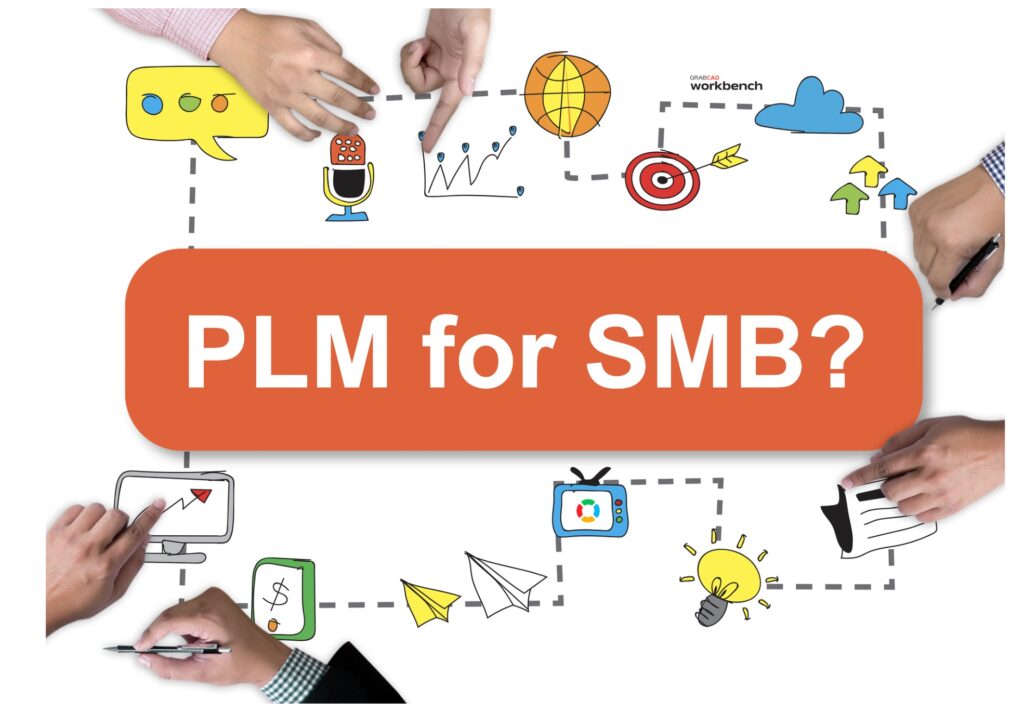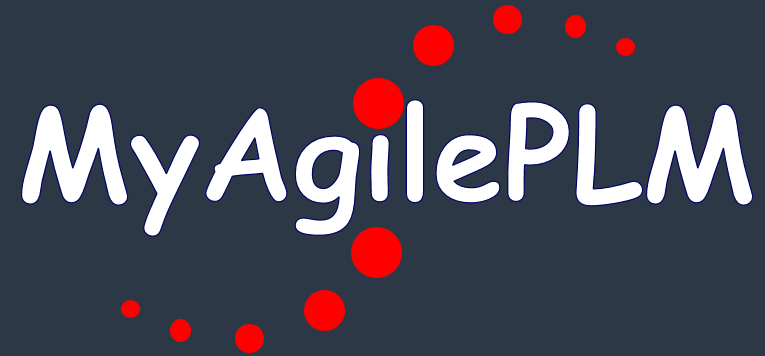
13 years ago, I was sitting in a small coffee shop in Brookline, Mass with Hardi Meybaum, co-founder of GrabCAD. We talked about engineering communities, how engineers are working behind the wall and have no ways to communicate, about barriers between engineering and manufacturing teams, and the need to connect engineers working globally in different places. I still have a picture of the first GrabCAD brochure.

Just a few years later GrabCAD was acquired by Stratasys and become a foundation of the team developing the GrabCAD platform for additive manufacturing.
GrabCAD Workbench
One of the interesting pages in GrabCAD product development was Workbench, which was pioneering cloud PDM functions. The product was introduced back in 2013. Back in that time, it introduced basic CAD file hosting and PDM function combined with 3D Viewer and review capabilities, which I tried in the first beta version. Workbench was a very simple product from the beginning and after Stratasys’ acquisition, GrabCAD decided to make the product free to everyone in 2015. Fast forward to 2022, GrabCAD announced that Workbench will be discontinued on June 1st, 2023 – A fond farewell to GrabCAD Workbench. That was the end of Free PDM dreams. At this point, there is no free PDM offering in the market. The only way to get “free PDM” is to get it bundled with cloud CAD (eg. Fusion360, Onshape, etc), both coming from large CAD companies (Autodesk and PTC) looking for market share expansion.
Here is my take on the top 3 lessons we can learn from the decade of experience with GrabCAD Workbench:
(1) The power of free
Free can do magic. A large number of GC Workbench users were satisfied with what it did because functions were simple and free. There is no free PDM replacement in the market at this point. I can see how the absence of free PDM will help cloud CAD systems such as Fusion360 or Onshape to get more popularity among people looking for a free solution.
(2) Engineers are still like files
Document management (and CAD files) are still the mainstream way to store engineering work and do product data management. 3D CAD files, drawings, PDFs, STEP, STL, and many other files need to be stored by engineers and users found them easy and simple to work with. This is how the traditional product development process works. COVID-19 was a big shakeout for everyone looking for how to work remotely. Thanks to the 2023 internet speed, moving CAD files is now not a big deal with the current internet and wifi capabilities.
(3) Simplicity wins – only limited PDM functions are widely needed
In general, customers are not looking for advanced PLM (product lifecycle management) functions. Similar to some other tools (eg. Word, Excel), we are not using the full richness of features and functions. Therefore, a simple PLM system with limited PDM capabilities such as GrabCAD worked well. Simplicity always wins.
Existing PLM/PDM Platforms Misalignment with SMB
One of the often debated topics in the PLM community for the last 10-15 years was the availability of PDM and PLM systems for small and medium size companies. The desire of everyone in the market to unlock PLM for SMBs was huge, because of the market size. At the same time, companies were making multiple attempts to make existing companies to downscale to small and medium size businesses.
SMB doesn’t have a vision and culture to implement PLM
This conclusion is usually the result of misalignment between what PLM vendors are offering and the needs of small companies. PLM is often presented as a business practice, which is much bigger than tools. The situation when you’re looking at how to grab a quick bite for lunch and someone is offering you a chef meal in a Michelin-rated restaurant.
SMB doesn’t have IT resources
Another very popular conclusion. It is often the outcome of the attempts to implement enterprise PLM without resources. In the past, enterprise-level PLM required servers, network infrastructure, and implementation teams. Modern circa of enterprise PLM targeted SMB is hosted PLM using cloud services which out of the box, which solves some of the resources issues, but leaves open TCO and implementation aspects of PLM.
SMB doesn’t have a need for a process complexity supported by PLM
Focus on what you need and not on suppliers’ capabilities. This is actually my favorite one. Small companies are looking for simple solutions without the complexity of process management, focusing on data management and data sharing. People in small companies are wearing multiple hats and aren’t looking for complex process support.
The reality of small companies is a combination of all three things I mentioned above together, combined with the absolute need of small companies to move fast and be lean and agile. Small companies are brutal about resources and then need simple services that can help them.
However, the most important PLM misalignment with small and medium companies is the narrow vision of PLM-only functions provided by a majority of PLM providers. The main point here is that a small company is not looking for “PDM/PLM functions”, but looking at what they need rather than suppliers’ capabilities. They need to have an entire process supported. And the process (even in a small company) is much bigger and more complex than CAD file management. Engineers can solve their problems of file management, but the company’s business function is to purchase components and make products from them is much more important and not covered by PDM/PLM vendors (in large companies, this is MRP/ERP function)
The lesson from GC Workbench is interesting here. I’m sure you’ve heard that to a man with a hammer, everything looks like a nail. If everything you can do is manage files, then all processes can be stripped down to file management, Excel spreadsheets, data sharing, and emails. GC Workbench was a CAD file management hummer and many engineers took it for free just because it was there. And solved their problems for free.
What is next after GrabCAD Workbench in the PLM industry?
PLM vendors made a long way in trying to understand how to fit PLM into SME companies. I found an interesting historical data point – Arena was offering 12 months (!) a free trial for SMB companies back in 2005. It was described by Kenneth Wong in his Cadalyst article PLM SMB Serenades based on the conversation with Arena Solutions co-founder Michael Topolovack. I found Kenneth Wong’s article very insightful covering multiple data points of analysts and vendors related to PLM for SMBs.
I found the following conclusion made by Kevin O’Mara of AMR Research done almost 20 years ago is still the best conclusion of PLM for SMB strategy failure. Check it in the 2004 article DE247 – Choosing the right PLM for small business. Here is the passage:
Too often, the SMB will select a PLM solution with broad functionality that fails to deal with the daily challenges of engineers and developers. Solutions designed for the large enterprise often manage few developmental logistics, instead helping with supply chain management, packaging, and post-development phases. For the smaller business, the process should begin with engineers faced with the daily issues of data management and communication.
I had a conversation over the weekend with one of my long-time blog readers telling me that PLM for SMB has no value and doesn’t have a sustainable path forward. Companies are either missing them when they grow fast or don’t need them when they keep a low profile. The first group is represented by VC-backed companies ending up with enterprise PLM systems anyway and the second one includes all small shops that don’t need anything anyway.
Until now, PLM and ERP industry failed to provide a right-scaled system with the right functions for small manufacturing businesses. The fast-growing company can miss their targets by not using software that can help them to be more organized. Small shops are looking for a complete system including PDM, PLM, and MRP functions together that doesn’t require complex integration and also provides end-to-end process support. In both cases, a right-scaled system with functions appealing to this market segment can be a valuable solution. Until now, most companies preferred to use Excel combined with cloud file storage to move forward.
So, the opportunity to provide a system capable to solve the problems of small businesses is here, but it requires a different product vision, business strategy, and resources to implement. The real problem is described by Brian Halligan, a HubSpot founder – Why aren’t there more Intuits. Growing with SMBs are hard and often rejected by investors. Which leads to the challenges to spend enough resources to get to a critical market share. Sometimes it happens because a very large company does it (eg. Autodesk Fusion 360 is growing their platform and was offered Fusion360 near free for a long time. Stratasys did it by making GC Workbench free for variety of reasons. The GC Workbench free PDM adoption was substantial and Stratasys GrabCAD team probably missed the opportunity to monetize it at a certain point of time, which is sad for all free GC Workbench users that will not have the software in 3 months. But it is an important lesson learned and data point for the industry.
What is my conclusion?
I think GC Workbench farewell can conclude a decade of experiments with free PDM and give some ideas about where users of free GC Workbench users can go now. There are two groups of users. The group that is looking for free software will end up with near-free cloud file storage and modern cloud CAD solving problems of PDM because it is part of their functions. The group looking for business software will be searching for new PLM platforms capable to organize an integrated process covering the entire lifecycle and not only PDM or PLM functions.
The PLM industry had enough experiments with different PLM for SMB strategies. It includes multiple PLM packages (free, out of the box, SaaS, etc.). The product market fit is the most tricky part, mostly because a traditional product segmentation (PDM, PLM, ERP, etc) was a leading factor, as I can see. We need to change it.
A bundle of PLM+ERP capable to manage CAD files, but also managing BOM and performing procurement, inventory, and financial software functions can be a hit for them. Just my thoughts…
Best, Oleg
Disclaimer: I’m co-founder and CEO of OpenBOM developing a digital-thread platform with cloud-native PDM & PLM capabilities to manage product data lifecycle and connect manufacturers, construction companies, and their supply chain networks. My opinion can be unintentionally biased.
The post GrabCAD Workbench Fond Farewell Lessons and What is Next in PLM for SMBs? appeared first on Beyond PLM (Product Lifecycle Management) Blog.



Be the first to post a comment.